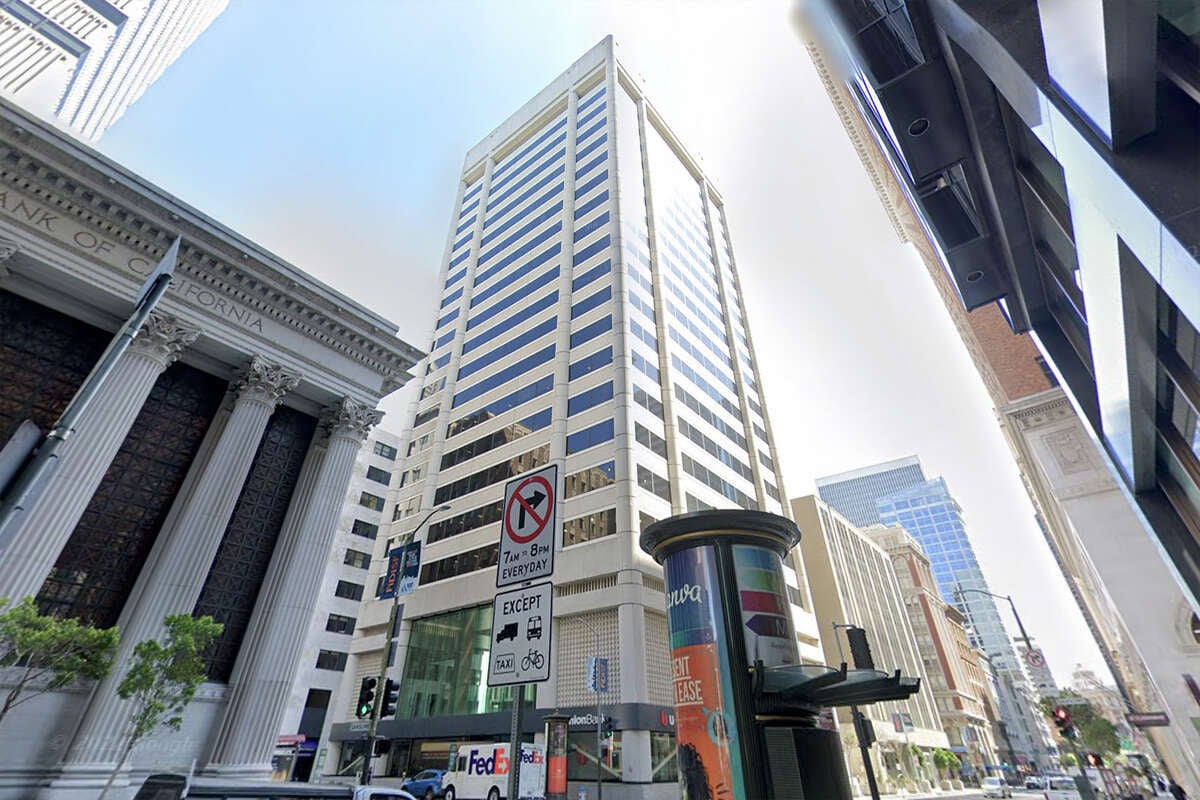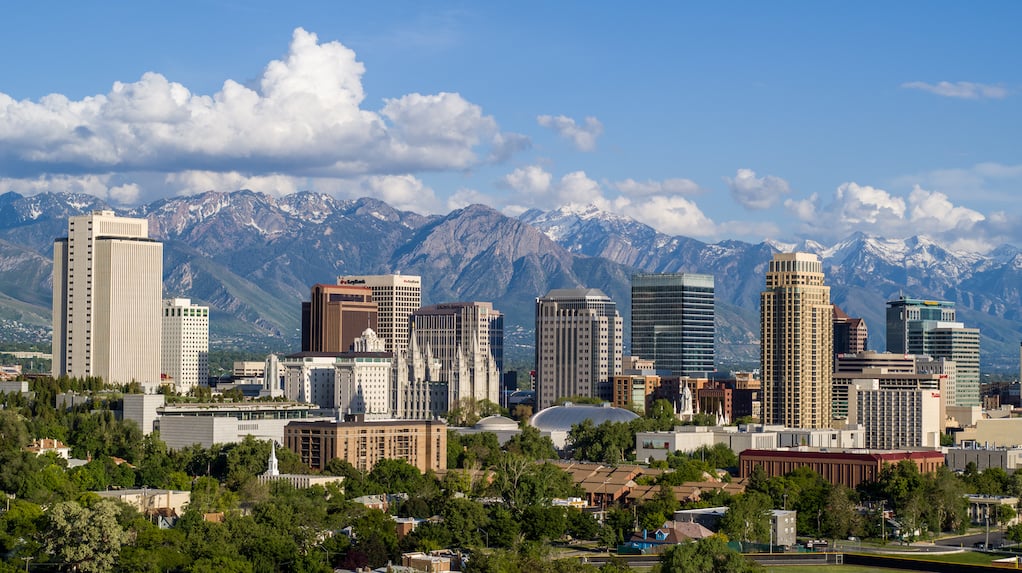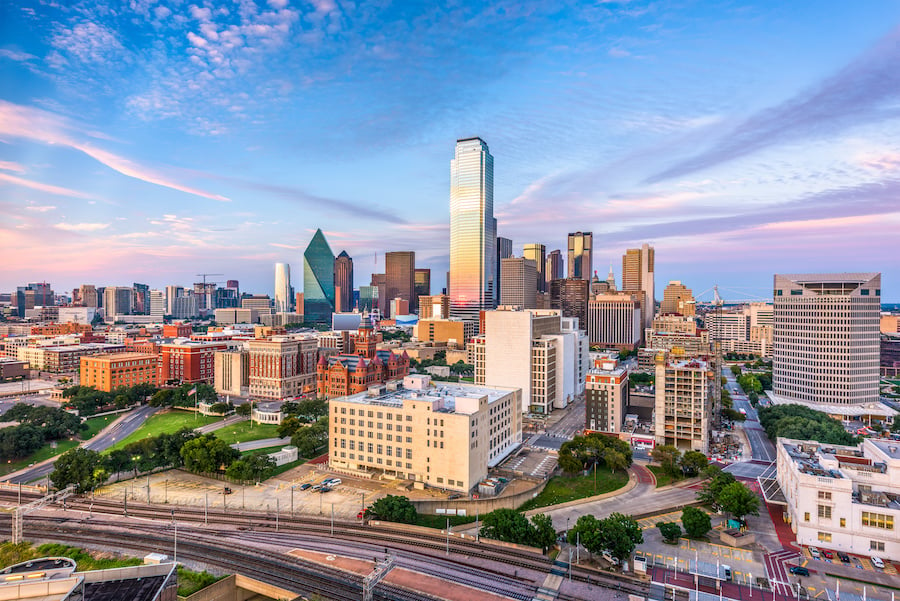In this article, you'll discover:
- How high office vacancy rates are reshaping real estate markets, particularly in cities like San Francisco and Denver.
- The effect of these rates on rental prices and property values.
- Financial challenges facing landlords in high-vacancy markets.
- Strategies for tenants to secure favorable lease terms in these conditions.
Demand for office space has reached critical lows across the country.
Office spaces are largely sitting empty, even four years since the pandemic began. And with no end to the lull in sight, major landlords are sounding the alarm bells.
Rampant low office utilization has created a massive ripple of problems to the broader market. Now, with the added pressure of unrelenting interest rates, one third of property owners are on a default watchlist.
And the market continues to keep a close and careful eye on the situation as a trillion-dollar wall of office loans is about to slam the greater economy, threatening to elevate the threat to a full-out bank bailout or recession.
But the office vacancy rate is not entirely consistent across the country. Some markets have it worse than others, with significant disparities in the number of vacant square feet observed in major office markets.
And remember, unprecedented vacancy rates exceeding 30% are symptomatic of an all-out Office Apocalypse. Learn how to survive as a tenant in this market by downloading your complimentary copy of Surviving the Office Apocalypse today.
National Office Vacancy Rate
For full context on where the office market stands, we need to take a look at the national average.
In the fourth quarter of 2023, vacancies rose to 19.6%. The number has been consistent through the first quarter of 2024. This is the highest number the office sector has seen on record since the metric began to be tracked in 1979.

Of course, the unprecedented nature of hybrid work has harmed tenant demand for new office space. So, we are seeing more empty office buildings now when compared to the pre-pandemic numbers, where the national average was around 16%.
And it is important to note certain trends in the country's commercial real estate demand. Modern buildings are driving a lot of the new leasing volume, rapidly devaluing older buildings. So, the average office vacancy rate by city also accounts for variations in property class.
Now, without further ado, let's look at the cities with the highest office vacancy rates. Data has been sourced from CoStar and Moody's Analytics.
The Worst Office Market in the Country
Ding, ding, ding. The winner (or loser) is San Francisco. With a staggering 36% vacancy rate among office buildings, the city has entered uncharted, recessionary waters.
And what can be said about San Francisco's office market that hasn't already?

The drop in tenant demand largely began with a pullback in leasing from technology companies since the pandemic. But problems are not just limited to losing the industry that launched its status as a stronghold.
San Francisco is plagued by an unsustainable high cost of living and taxes. Now, worsening the situation, the city is experiencing extremely high levels of crime and shoplifting. This far from business-friendly environment is driving away people and businesses in droves.
Office owners have had no choice but to cut and run, given the millions of square feet of excess supply. This has led to the rise in distressed fire sales of office towers downtown for almost 90% what they were worth several years ago. Read more about San Francisco's exponentially dropping sale values.
This has also driven down the average leasing price for office rents to about $50 per square foot, roughly half of what square footage went for during the Silicon Valley Gold Rush.
Denver
The next metro area on the list is Denver. With a 31% office vacancy rate in the central business district, many are wondering if the city can return from such low numbers.
Prior to and during the pandemic, Denver experienced a boom in office construction. The addition of new office space has outpaced the need leading to an oversupply and contributing to the high vacancy rate.
With the simultaneous downsizing among businesses accelerated by remote work, there has been a notable rise in sublease space.

This has resulted in a surge of subleases, as businesses with long-term leases seek to offload excess office space. Despite a decrease in new subleasing activity, overall vacancies continue to rise. Additionally, economic uncertainties and rising interest rates have made businesses cautious about committing to long-term office leases.
Despite reasonably priced rents among office buildings being leased for an average of around $30 per square foot, the city is dealing with a serious "zombie building" crisis. This contributes to the Urban Dystopian spiral where empty buildings drain the greater market of significant capital, rapidly worsening the environment.
Seattle
The Seattle office market is no stranger to the issues facing the other cities on this list. With a 28% vacancy rate among office buildings, the number has shot up from what it was a year earlier.
Actually, there have been nine consecutive quarterly increases in the city's vacancy rates.
Part of this is the tech downturn that began in 2022, which led many companies to cut expenses and lay off workers. And now, while some tech firms are bringing employees back to the office, many continue to offer remote-friendly options, reducing the need for large buildings and leases.
Downtown Seattle has been slow to recover compared to other U.S. cities. Although there was a 16% increase in average daily visits to the office in downtown Seattle in February 2024 compared to the previous year, this number is still only a fraction of pre-pandemic levels.

Developers have largely paused new construction projects indefinitely due to the uncertainty around future office space demand. Rent remains around $35 per square foot for office buildings.
Dallas
The Dallas-Fort Worth market, despite being home to over two dozen Fortune 500 companies and accounting for one-third of Texas's $1.8 trillion economy, faces high office vacancy rates similar to Houston.
This issue is primarily driven by overzealous developers capitalizing on low interest rates, leading to an oversupply of office space. Consequently, the central business district now has a vacancy rate of 26%, according to CoStar.

Adding to the concern is the fact that 20% of Dallas's office loans are set to mature by 2025, which, while not immediately catastrophic, raises red flags for tenants seeking stable, long-term investments.
The ongoing challenges of hybrid and remote work further exacerbate the situation, as losing a major tenant or experiencing significant downsizing could negatively impact the market balance, creating a precarious outlook for the city's commercial real estate sector.
Rent is around $30 per square foot for office buildings.
Office Buildings at 25% Vacancy for These 6 Cities:
Office vacancy rates for the next cities are sitting at a six-way tie. There are millions of square feet of empty space in offices across these markets.
The root of these issues usually stems from a convergence of factors including overdevelopment, pullback in leasing from remote work, and high costs from metro areas associated with a swifter downfall and harder crash.
The following markets are running at 25% vacancy among office buildings:
-
Houston, Texas
-
Atlanta, Georgia
-
Portland, Oregon
-
San Jose, California
-
Los Angeles, California
-
Chicago, Illinois
Takeaways for Tenants
High vacancy rates are not isolated to these markets. The national office vacancy rate is the highest it’s been in decades and in some places, it’s going to increase further. As under-occupied leases reach their expiration, consider how much space is set to become available. Supply is far outpacing the total number of businesses seeking offices.
But the good news is, there has never been a better time period for tenants to negotiate a strong lease in their interests. Because high vacancy rates encourage building owners to concede to better terms and prices to bring in businesses.
High vacancy rates are symptomatic of a post-pandemic, apocalyptic office market. Tenants gave the power to decide which property and markets are best for them. Don't expect this issue to dissolve any time soon. So learn how to thrive, adapt, and avoid getting stuck in the crossfire between a failing landlord and a receiver. Receive all the information corporate tenants need to take advantage of this challenging era in
Surviving the Office Apocalypse.
Wondering where to begin?
Related Content
- 5 Cities With the Highest Office Vacancy Rates
- What's the Relationship Between Office Occupancy and Vacancy Rates?
- Does Manhattan Have Too Much Empty Office Space? NYC Vacancy Record
- The Rise and Reset of Life Sciences Office Spaces: Which Cities Are Hotspots?












